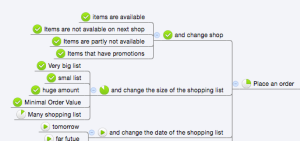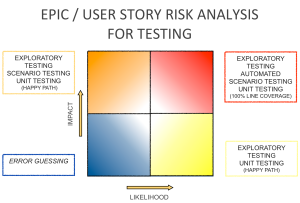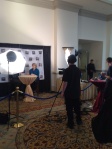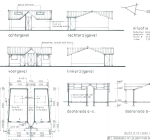As a tester one part of your job is to come up with testing idea’s. A way that is very often used is take the template used in a previous testcase. The test cases can have the format like excel or something like As a user I want so that. It is very comfortable to do, it gives you guidance. The result is often good.
I tend to use a different approach. The tool I use to execute the test, this can be manual or automated, I will not use for brainstorming / test case generation. In a project where I use cucumber-js for checking acceptance criteria. I use a mind map for generating the testing idea’s. The tool that I use is Xmind.
I tend to start with a blank document, this is done so that I am not biased by the previous example. After this test example generation, I have a nice set of tests. Then I open a previous test to see if I have something forgotten or I need to add test from the previous test. This follows the same process (look, see, image, show) as described in  on the The back of the napkin from Dan Roam.
on the The back of the napkin from Dan Roam.
Other great sources of tests idea’s are the domain testing workbook from Cem Kamer, testing tours, the heuristic test strategy model, You Are Not Done Yet list.
I also use the mind map in Xmind to mark al test that (in this case) are automated, see example image.
When these idea’s do not suites you an other option is to use a little technique to play with words. Let me give an example: As an site admin I want to see if my site is operational so that …
As an site admin I want to see if my site is operational.
As an site owner I want to see if the site is operational.
As an site user I want to see if the site is operational.
As an site developer I want to see if the site is operational.
As an site … I want to see if the site is operational.
As an site admin I want to get a mail if the site is operational.
As an site admin I want to get a mail if the site is not operational.
As an site admin I want to get text message if the site becomes not operational.
As an site admin I want to get text message if the site becomes operational again.
As an site admin I want to get mail if the site is degraded.
As an site admin I want to get mail if the site is slow.
You got the idea (I think), so you can create many more testing idea’s.
Tip: Try each word to changed with an inverse one, an alternative word like in this example change see into / call / text message /mail /… .
Chancing the format / the view helps to get new idea’s. Try to print and use a pen and paper. Try to go where your product is used or go outside in a park, at least go to a different room.
In my case grabbing a guitar will also help. Be surprised about what happens.













